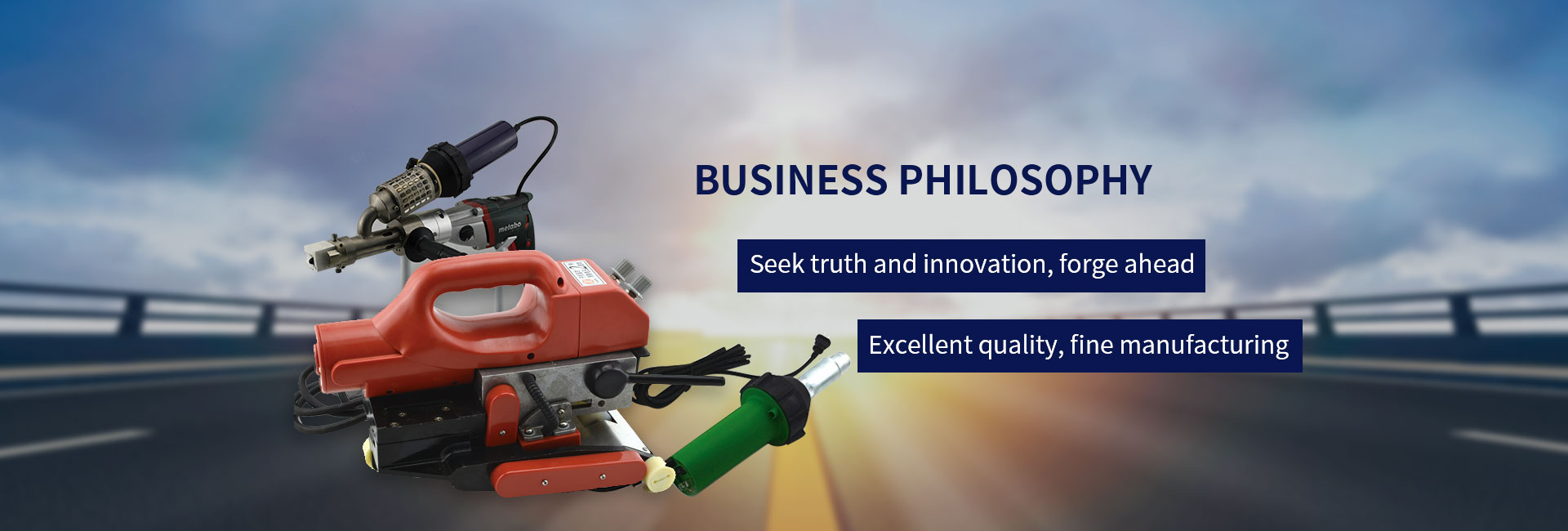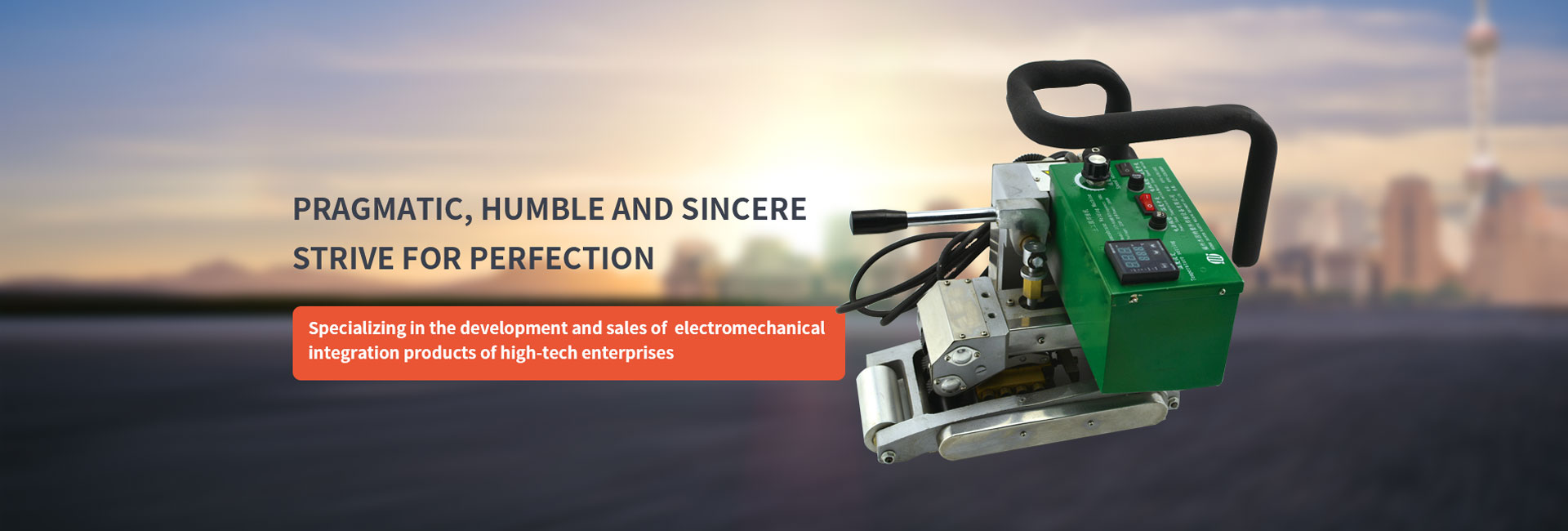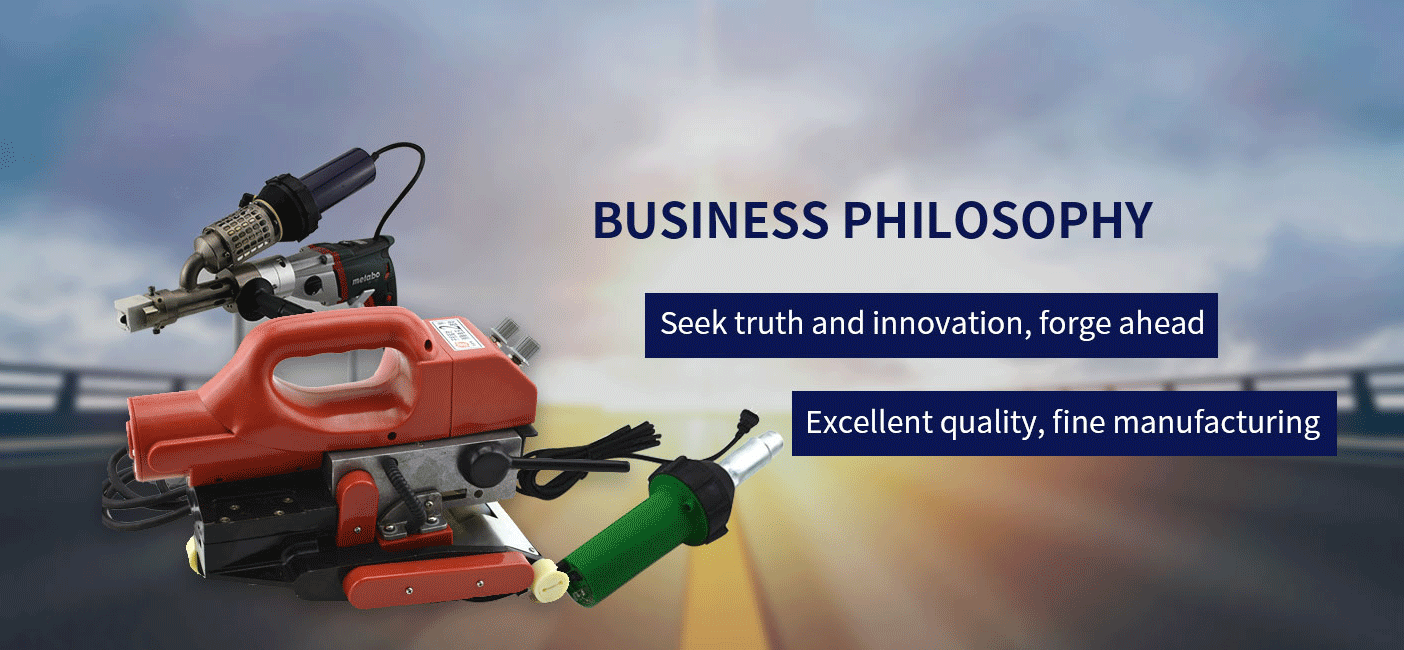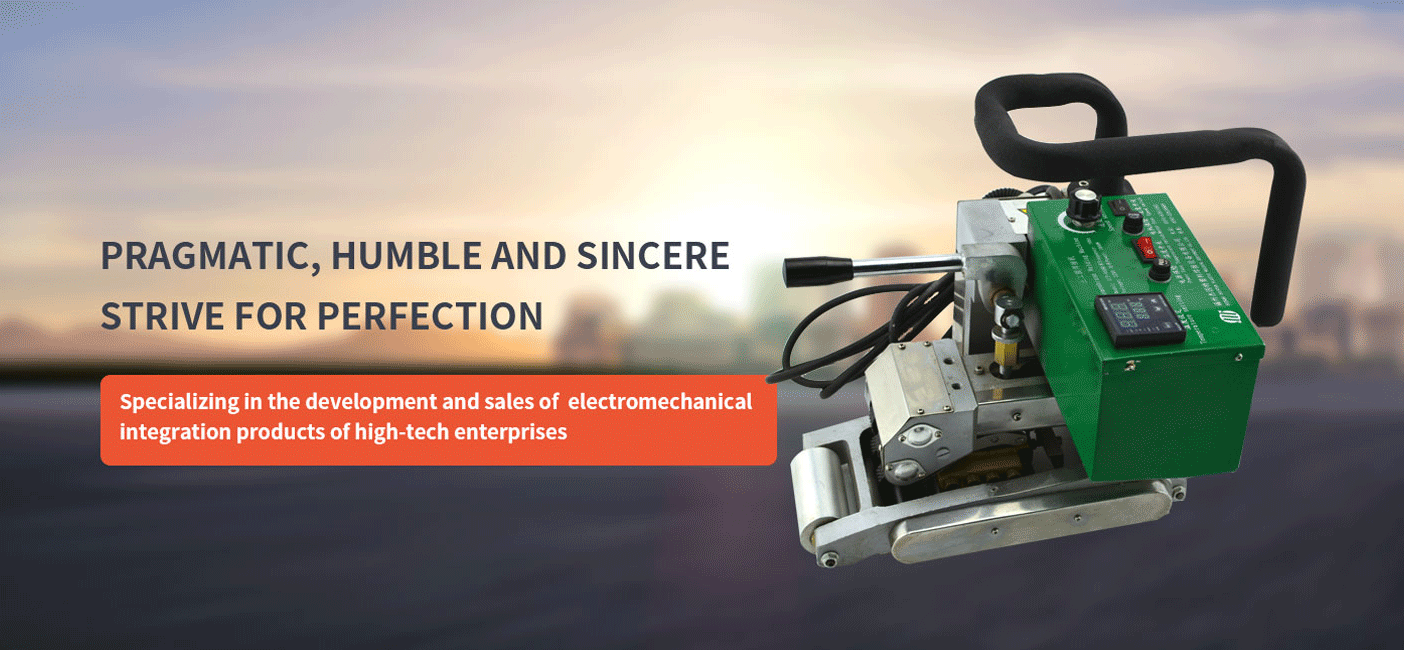Composite geomembrane product structure is divided into one cloth one film, two cloth one film, two film one cloth and so on, the width can reach 6 meters; the thickness of membrane material is 0.2mm-0.8mm, the protective layer geotextile is 100g/m2-800g/m2; the types of base cloth are needle-punched short fiber geotextile, polyester filament needle-punched geotextile, woven geotextile, non-woven geotextile, glass fiber mesh and so on; the membrane material (macromolecule synthetic material) is made of high density polyethylene. (HDPE), low pressure polyethylene (LDPE), chlorinated polyethylene (CPE), EVA (ethylene copolymer), PVC and so on. At present, it is widely used in many fields, such as dams, channels, roads, airports, houses, environmental protection and so on. It has good sealing anti-seepage performance. In channel engineering, the composite geomembrane with two layers and one film is generally used, and the membrane material in the middle is black (containing carbon black).
I. Characteristics of Construction Law
Artificial laying of composite geomembrane in canals is simple and efficient, and some projects have similar successful experience. However, when laying large area and centralized, more people are needed.
II. Scope of application
It is suitable for artificial laying of various composite geomembrane in canal seepage control measures. The Technical Specification for the Application of Geosynthetics (GB50290-98) has clear requirements for the use of geomembrane.
III. Technological Principle
Artificial laying of composite geomembrane is to spread the fixed-size composite geomembrane on the foundation of canal by hand, and connect the geomembrane with each other to form a complete impervious layer by using viscose or special welding equipment.
IV. Construction process and key points of operation
(1) Process flow
In-Site Transportation Laying Splicing Weld Inflation Detection Geotextile Suture
(2) Operating Points
1. On-site transportation
In-site transportation adopts self-made flat car. The flat car is 1.2m wide and 4.0m long. It can transport 3-4 rolls of geomembrane at a time. After loading, it is transported manually to the construction site.
2. Laying
Artificial paving is adopted. Before laying, two rows of boards were laid on the gravel material surface (or excavation foundation) with the same width of geomembrane. When laying, four people pulled the geomembrane on the top of the slope, and one person at each station on the left and right sides of the slope, supported the geomembrane roll, and slowly unfolded the geomembrane on the slope. When laying two geomembranes, the overlapping and overlapping of splicing must be considered, which is generally controlled at 15-20 cm to facilitate splicing.
3. Stitching, testing and stitching
A. The joint of composite geomembrane should be tested before construction. In the production of composite geomembrane, the non-bonding width of 16 cm geotextile and geomembrane is reserved at the width. According to the different impermeability requirements, the composite geomembrane joints can be welded by hot melt or bonded by special adhesive. When hot-melt welding is adopted, the welding equipment should be compared, and the welding temperature, welding speed and construction technology requirements should be obtained. If bonding is adopted, the bonding agent comparison, bonded tensile strength, elongation and construction technology should be carried out.
B. Place a board at the bottom of two geomembrane joints for splicing operation platform. Wood boards must be smooth, without burrs and other defects, to prevent the piercing of geomembrane.
C. Open the geotextiles at the joint of two adjacent composite geomembrane, clean the bonding surface of membrane material, and remove oil, dust, water stains, silk hair, etc.
D. Welding. At present, there are many mechanical equipments in the market for composite geomembrane welding, which can be applied to the welding requirements of various geomembrane. Generally, the weld width formed by welding machine is 12.5 mm, totally 2, and the cavity width formed in the middle is 12 mm, which is used to check the weld quality.
Firstly, the lower geotextile was sewed up, and the welding edge direction of the two films was adjusted to overlap 15 cm. Two welds were arranged, each 12.5 mm wide, and 12 mm holes were left between the two welds. Before welding, the dirt such as sand and soil on the film surface is blown away by hairdryer to ensure that the film surface is clean. A long wooden board is laid under the welding part so that the welder can walk on the flat base surface and ensure the welding quality. Before formal welding, according to the construction temperature, test welding is carried out to determine the walking speed and welding temperature of the geomembrane welding machine. Generally speaking, the walking speed is 1.5-2.5 m/s, and the welding temperature depends on the thickness of the film. Generally, the welding temperature of 0.3-0.5 mm thick geomembrane is recommended between 300-350 degrees, 0.5-1.0 mm thick geomembrane is recommended between 330-380 degrees, and 1.0-1.5 mm thick geomembrane is recommended between 360-420 degrees.
E. Adhesion method is artificial bonding with chemical adhesives. Chemical adhesives are usually KS hot melt adhesives, which need to be tested before use, including softening point, impermeability pressure, peeling strength at 180 C, T-peeling strength, shear strength and water resistance. This kind of adhesive is solid black or brown, with vinyl acetate and ethylene copolymer as the base material, adding appropriate tackifier (rosin), viscosity and coagulation speed regulator (paraffin) and a small amount of antioxidant (such as di-tert-p-methylbenzene brewing) to slow down the aging rate of hot melt adhesive. The construction procedure is as follows: KS glue finished product heating to 180-220 melting into liquid state metal roller gluing bonding --> checking warpage, protrusion, degumming, hole, loosening, glue shortage, dislocation, etc. --> quality confirmation.
The adhesive must be evenly spread over the bonding surface, but thick and not leaky. During the bonding process and within 2 hours after bonding, the bonding surface shall not bear any tension, and dislocation of the bonding surface shall be strictly prohibited. According to the specifications, the bond strength of geomembrane joints is not less than 80% of the base material, and that of geotextile joints is not less than 70% of the base material.
F. Detection and suture. The gas filling method is used to detect the weld seam step by step. The inflatable equipment includes air needle, pressure gauge (display less than 5 Mpa), inflatable cylinder and hot welding gun. The length of double seams is 30m-60m, the gas pressure between double seams is 0.15MPa-0.2MPa, and the static observation is 5min. The pressure is qualified without obvious decrease. Immediately after the detection, all the air-filled pinholes were repaired by extrusion welding method, and the surface geotextiles were sewn up by a seam machine.
Ⅴ.Material and Equipment
1. Composite geomembrane materials
According to the requirements of "Technical Specification for the Application of Geosynthetics" (GB50290-98) and "Technical Specification for Seepage Control of Polyethylene (PE) Geosynthetic Membrane" (SL/T 231-98), the physical and mechanical properties of PE Geosynthetic Membrane should meet the following requirements:
1) Density (p) should not be less than 900kg/m3.
2) The failure tensile stress (_) should not be less than 12 MPa.
3) The elongation at break (e) should not be less than 300%.
4) The modulus of elasticity (E) should not be lower than 70 MPa at 5 C.
5) Frost resistance (brittle temperature) should not be lower than - 60 C.
6) Joint strength should be greater than base metal strength.
7) Tear strength should be greater than or equal to 40KN/m2.
8) The impermeability strength should be impermeable at water pressure of 1.05 MPa for 48 hours.
9) The permeability coefficient should be less than 10-11 cm/s.
10) It conforms to the Hygienic Standard for Polyethylene Molded Products for Food Packaging (GB9687-88). Geomembrane is non-toxic and non-polluting to water quality.
11) No sand holes, defects or impurities are allowed in geomembrane; no uneven thickness of geotextiles is allowed.
2. equipment
A. The welding equipment is a special composite geomembrane welding machine.
B. Weld inspection equipment (instrument) includes piston pressure cylinder, pressure gauge and electric heating fan.
VI. Key Points of Quality Control
(1) Strict quality control, sampling and testing after entering the site, unqualified geomembrane is strictly prohibited to use, must be cleared out of the construction site.
(2) Before the construction of the joint of composite geomembrane, the technological test should be carried out, and the parameters such as walking speed and temperature control of the welding machine can be obtained before the construction.
(3) When overlapping, the principle of high membrane pressure on low membrane surface and downstream membrane pressure on downstream membrane surface in accordance with the direction of flow should be followed. The top of the geomembrane should be anchored in the concrete of the sealing roof and pressed into the soil layer under the curb stone to form an integral impervious layer. The anchorage length should meet the requirements of the construction drawings.
(5) Geomembrane should be cut neatly to ensure adequate bonding width. When void, shrinkage, wrinkle and twist bulge occur in construction, they should be removed and re-assembled. Geomembrane and foundation should be pressed flat and close to avoid overhead and remove bubbles to ensure safety.
(6)When the air humidity exceeds 60% and the temperature is below 5 C, it will seriously affect the quality of welding or bonding. Construction is strictly prohibited.
When welding, it is strictly forbidden for the constructors to step on the geomembrane directly. Put boards or ladders on slopes, and people stand on the boards to weld during construction. Effective measures should be taken to prevent mechanical damage to the geomembrane that has been laid.
(7)After the geomembrane is assembled, it must be properly protected from direct sunshine in order to prevent damage. The composite geomembrane damaged during construction should be repaired in time. Material that does not meet the requirements of the lower base of geomembrane should be removed, filled with qualified material and leveled. For the damaged part, a qualified composite geomembrane should be laid on the damaged part, and the length of each side should be at least greater than LM of the damaged part.
(8)In the welding process, to keep the film surface clean, all kinds of sundries, dust, etc. must be cleaned. Watermarks should be wiped with clean cloth to keep the film surface dry.
(9)In the process of geomembrane welding, the overlap width of two geomembranes should be kept uniform and smooth, and the geotextiles on both sides should be rolled out of the trajectory of the welder, so as to prevent the scalding of the film surface caused by folding and winding in the process of walking.
(10)When bonding geomembrane, the adhesive must be uniformly spread over the bonding surface, but it is thick and does not leak out. During the bonding process and within 2 hours after bonding, the bonding surface shall not bear any tension, and dislocation of the bonding surface shall be strictly prohibited.
(11)Suture of geotextiles on the upper and lower layers of membrane surface. When sewing geotextiles, it is necessary to ensure that the upper and lower sutures are staggered.
Ⅶ.Safety measures
(1) Operators should wear soft-soled anti-skid shoes and stand on wooden boards laid on slopes to prevent falling.
_When welding geomembrane, the machine should first start the walking device after preheating, then press down the welded plate. After a weld reaches the end, the welded plate should be lifted first and then shut down.
(3) If there is stuck in the welding process, the power supply should be cut off immediately, and the welding plate at the bottom of the welding machine should not be touched by hand to prevent scalding.
(4) For the geotextile silks wound on the rotating axle of the welding walking mechanism, they should not be taken out by hand in the rotating state, but by special tools in the stopping state.
(5) The sewing of geotextiles is done by skilled workers. When sewing, the cloth mouth should be smoothed first. It is strictly forbidden for one person to operate the hand-held cloth and sew it with one hand, so as to avoid needling fingers by the sewing machine.
Ⅷ. ENVIRONMENTAL PROTECTION MEASURES
(1) When special adhesive is used to bond geomembrane, the heating glue on site should be in the lower air outlet.
(2) Redundant geomembrane waste cut on site shall not be disposed of by incineration, which shall be collected by special personnel and concentrated buried or dissolved and destroyed.
(3) When welding, operators should wear gloves and masks to prevent scalds or inhalation of harmful gases.
Ⅸ. Benefit Analysis
(1) At present, there are many manufacturers producing geosynthetics in the market, with uneven quality and different prices. Before calculating the cost, it is necessary to conduct rigorous market investigation and select appropriate price geomembrane on the premise of guaranteeing quality.
(2) Because of technical reasons, the technology of mechanical laying of geomembrane is not yet mature, so the laying of geomembrane is mainly manual, and the labor cost is high.
Ⅹ. Engineering application examples
The Expansive Soil Test Section of the Main Channel of the Middle Route of South-to-North Water Transfer Project (Nanyang Section) is located in Jingang Township, Wolong District, Nanyang City, with a total length of 2.05 km. It is divided into three test zones, i.e. filling test zone, weak expansive soil test zone and medium expansive soil test zone, and a total of 13 sub-zones. Different test schemes are arranged in each test sub-zone, of which 10 test sub-zones adopt composite geomembrane. The 10 sub-areas of canal slopes are 1:2. The top of the slopes is edge stone, the foot of the slopes is alveolar, and the width of the floor is 15.89m-22m. Composite geomembrane is laid on the whole section under the concrete face slab. The composite geomembrane of the channel section is laid on the gravel cushion, and the top is buried under the concrete curb stone, which is connected with the geomembrane under the road surface, and the end is buried in the drainage ditch under the road.




